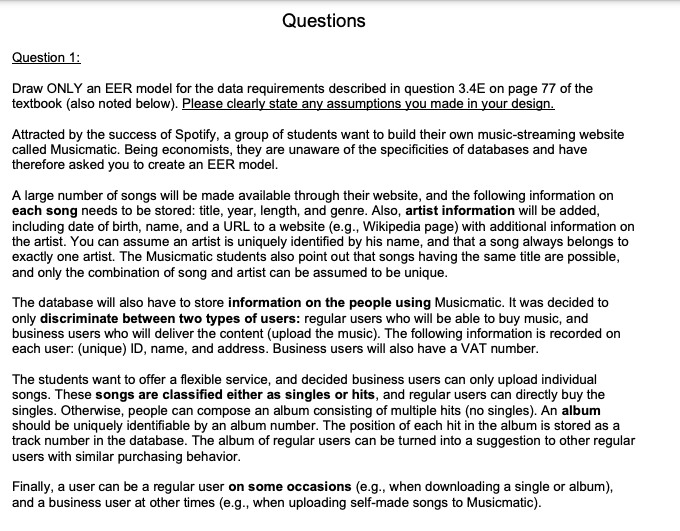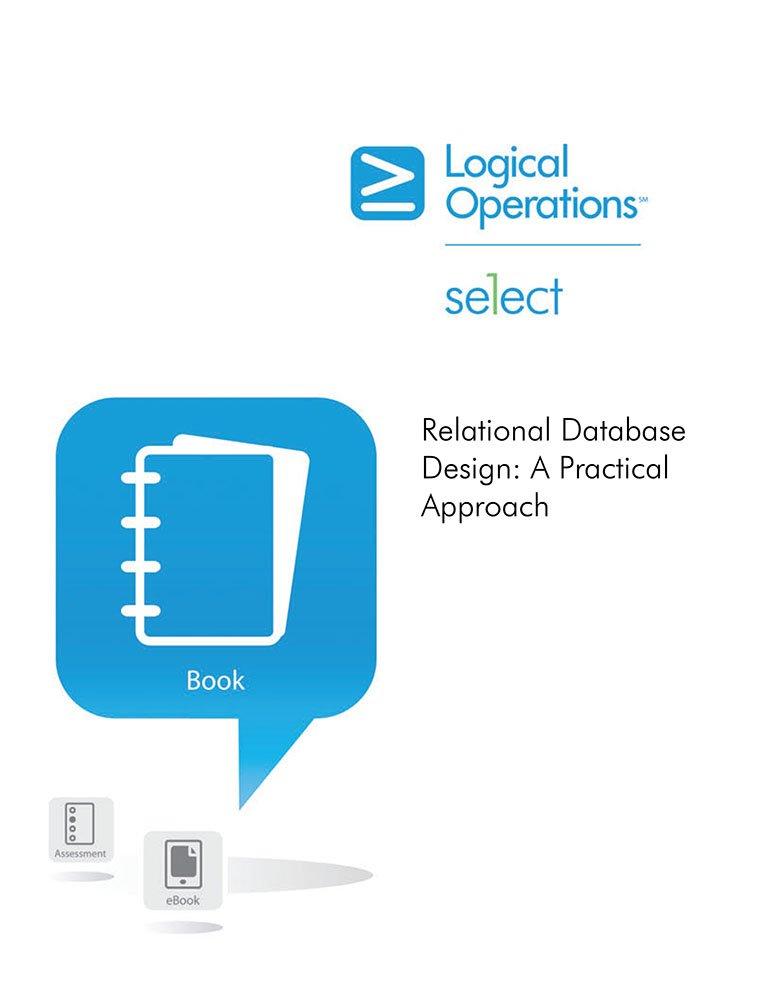Lab 3. Enhanced Entity Relationship (EER) Model

Question 1: Draw ONLY an EER model for the data requirements described in question 3.4E on page 77 of the textbook (also noted below). Please clearly state any assumptions you made in your design. Attracted by the success of Spotify, a group of students want to build their own music-streaming website called Musicmatic. Being economists, they are unaware of the specificities of databases and have therefore asked you to create an EER model. A large number of songs will be made available through their website, and the following information on each song needs to be stored: title, year, length, and genre. Also, artist information will be added, including date of birth, name, and a URL to a website (e.g., Wikipedia page) with additional information on the artist. You can assume an artist is uniquely identified by his name, and that a song always belongs to exactly one artist. The Musicmatic students also point out that songs having the same title are possible, and only the combination of song and artist can be assumed to be unique. The database will also have to store information on the people using Musicmatic. It was decided to only discriminate between two types of users: regular users who will be able to buy music, and business users who will deliver the content (upload the music). The following information is recorded on each user: (unique) ID, name, and address. Business users will also have a VAT number. The students want to offer a flexible service, and decided business users can only upload individual songs. These songs are classified either as singles or hits, and regular users can directly buy the singles. Otherwise, people can compose an album consisting of multiple hits (no singles). An album should be uniquely identifiable by an album number. The position of each hit in the album is stored as a track number in the database. The album of regular users can be turned into a suggestion to other regular users with similar purchasing behavior. Finally, a user can be a regular user on some occasions (e.g., when downloading a single or album), and a business user at other times (e.g., when uploading self-made songs to Musicmatic)







